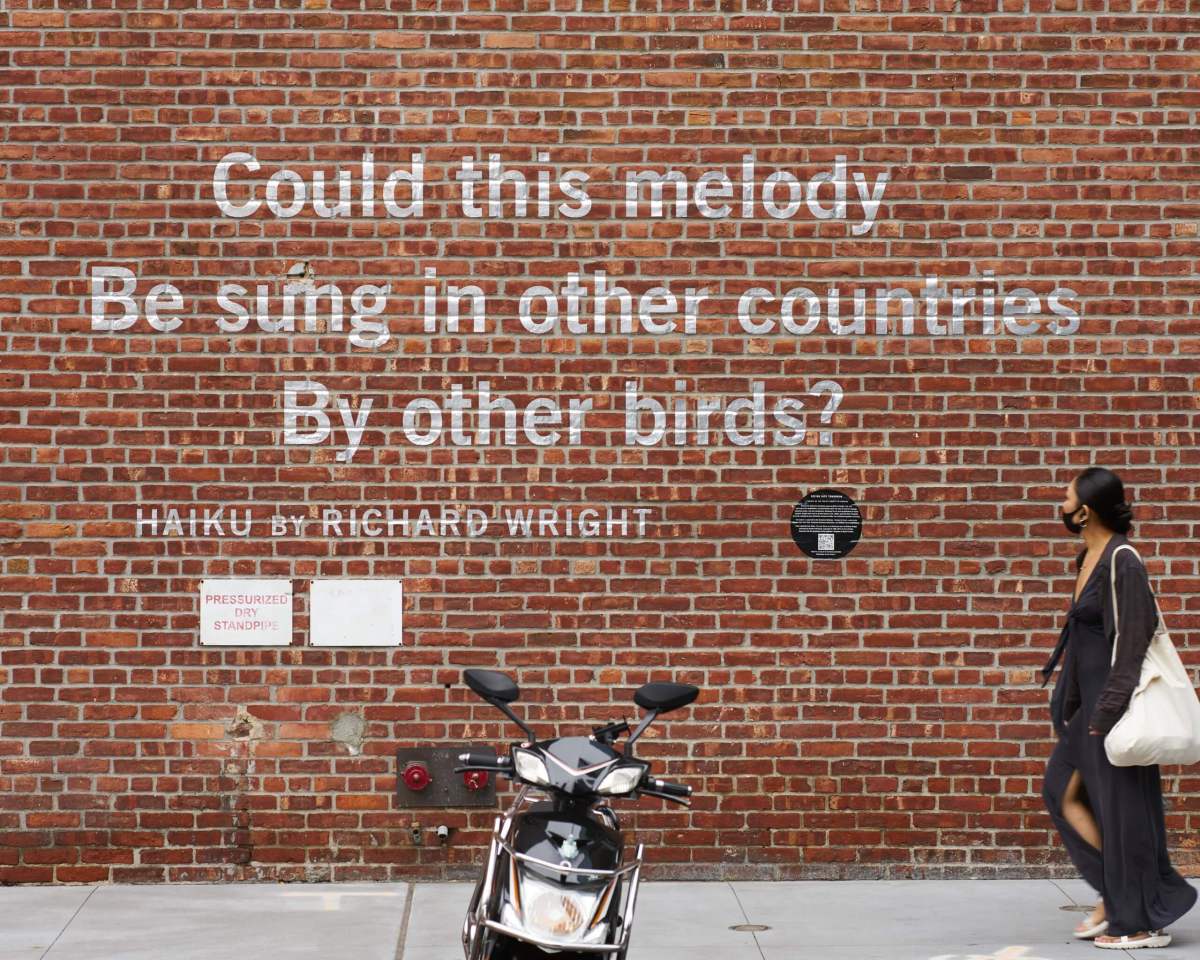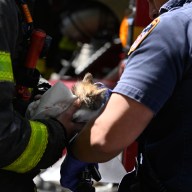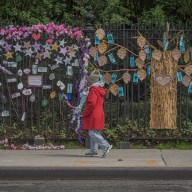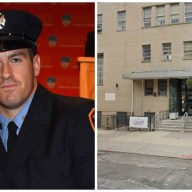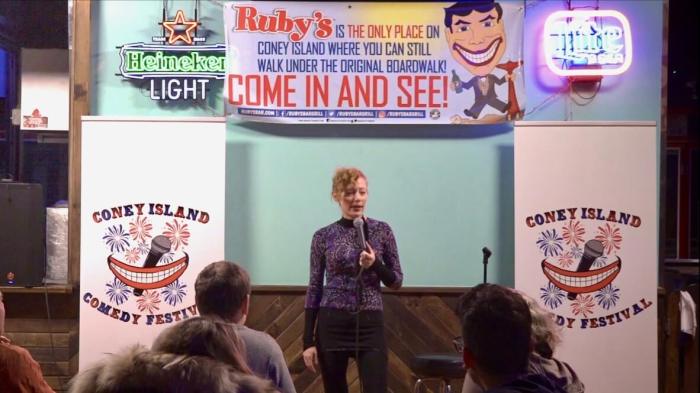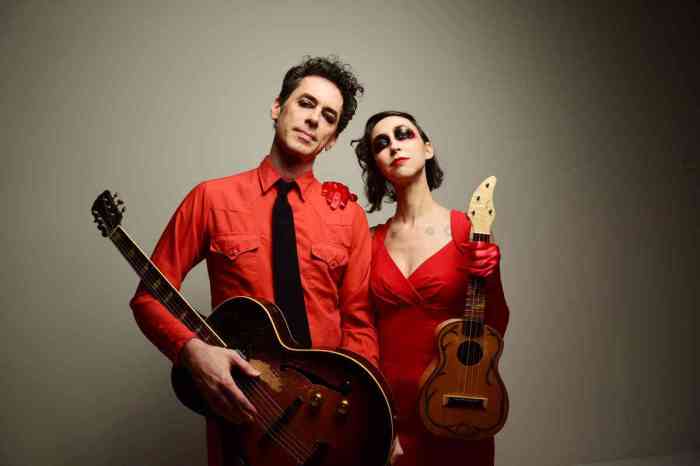An ongoing art project is now beautifying parts of Downtown Brooklyn with murals creators hope will force residents and tourists to see the city in a new way.
“Seeing Into Tomorrow,” a project founded by the Poetry Society of America following the police killings of George Floyd and Breonna Taylor, transforms short poems by Richard Wright into large-scale installations.
The society’s executive director, Matt Brogan, says last summer’s social justice uprising is what influenced the group to start sharing Wright’s work.
“We wanted to bring attention to a writer whose body of work spoke so urgently to issues of racial injustice, but who also insisted on holding a space for joy,” said Brogan. “We felt that Richard Wright’s poetry, and his cultural legacy in Brooklyn, was under-recognized and that these wonderful short poems would make for an ideal public art project.”
Wright, a Black writer, is best known for his works “Black Boy” and “Native Son,” in which he writes about the Black man’s experience with oppression, poverty and racism. He began writing haiku, and sources say that Wright dedicated the last few years of his life to studying the form of poetry, writing more than 4,000 of them.
According to Brogan, the choice to place the art on well-known neighborhood buildings was a deliberate one, aimed at creating “intimate and unexpected encounters between readers and poems, encounters that are rarely witnessed or documented.”
The Poetry Society intentionally designed “Seeing into Tomorrow” as a multi-site project.
“We wanted to encourage viewers to cross boundaries and experience the incredible diversity of this area,” said Brogan.
Members of the Poetry Society say they’ve already received positive feedback as the community discovers their project and that they hope to continue “provok[ing] new ways of thinking about social justice.”
A map of the murals locations can be found here.


